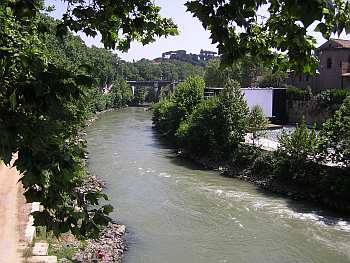 |
Today I took a walking tour described in a book Romewalks which I found in the Maryknoll house. The tour started at the Tiber River. |
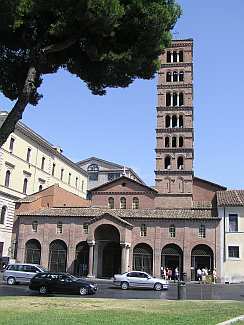 |
This is the church of St. Mary in Cosmedin, a popular stop on the tourist circuit and one of the best examples of medieval church architecture in Rome. It began as a diaconia, a center to feed the poor, serve the sick, and care for the pilgrims who came to Rome. |
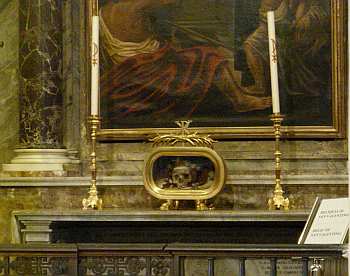 |
One of the attractions of St. Mary in Cosmedin is the skull of St. Valentine for whom Valentine's Day is named. It is kept in a gold case on an altar in a side chapel. |
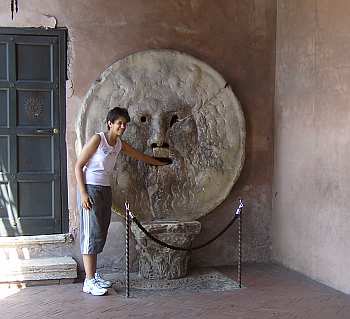 |
This is the bocca del verita or "mouth of truth," also located at St. Mary Church. Legend has it that if a person puts his or her hand in the mouth and tells a lie, the stone mouth will close and cut off the fingers. It is actually a drain cover for the famous Cloaca Maxima, the large Roman sewer that drains into the nearby Tiber. |
|
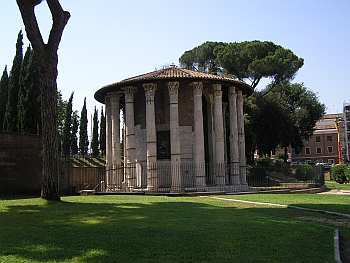 |
Across the street from St. Mary Church is this Temple of Vespa, built in the first century b.c. and one of the oldest buildings in Rome. |
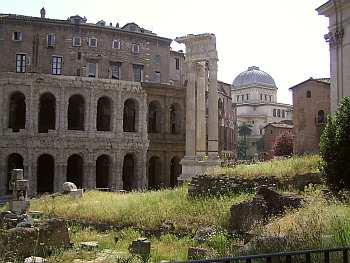 |
This is the theater of Marcellus, one of the oldest inhabited buildings in the western hemisphere. Originally built as a theater, it subsequently became a fortress, a Renaissance palace, and today a complex of apartments and offices. |
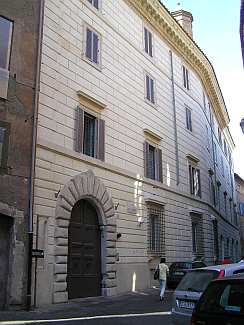 |
On one side street I walked on this tour, I encountered this house where St. Ignatius Loyola stayed in Rome while he was waiting for Vatican approval, which came in 1540, of his group of missionaries which became the Society of Jesus or the Jesuits. Through the door is a beautiful courtyard. |
 |
The Turtle Fountain has been called the most beautiful fountain in Rome. It was constructed in the 1600s, perhaps with guidance from Raphael and Bernini (who made the huge canopy over the altar in St. Peter's Basilica.) |